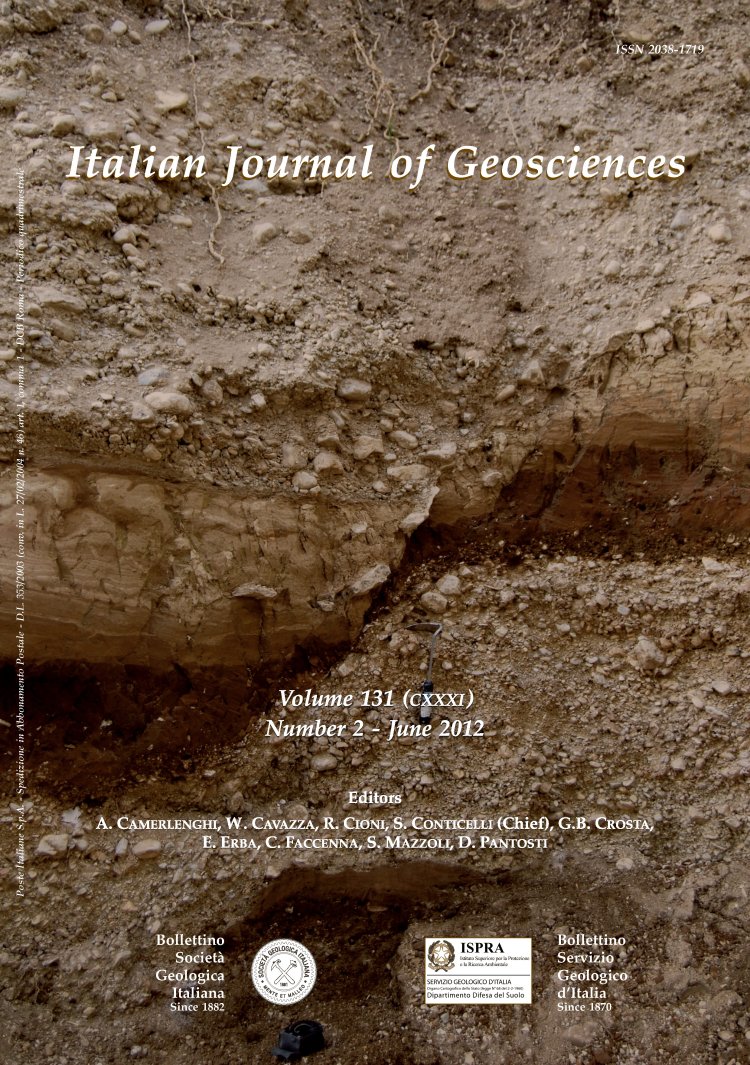
Analysis of the fault pattern in the Lower Lanzo Valley (italian Western Alps): a multi-scale integrated approach
Ermes Fusetti(*), Gianluigi Perrone(**), Michele Morelli(***) & Paola Cadoppi(****)
(*) Regione Piemonte - Direzione OO.PP. - Torino.
(**) Dipartimento di Scienze della Terra, Università degli Studi di Torino.
(***) ARPA Piemonte - Dipartimento Tematico Geologia e Dissesto, Torino.
(****) Dipartimento di Scienze della Terra, Università degli Studi di Torino. Corresponding author: Paola Cadoppi, Dipartimento di Scienze della Terra, Via Valperga Caluso, 35 - 10125 Torino -tel.: 011.6705187 - fax: 011.236.5187 - e-mail: paola.cadoppi@unito.it
Volume: 131 (2012) f.2
Pages: 286-301
Abstract
This work combines, at different scales, field mapping, detailed structural analysis, satellite images (Landsat TM and ASTER) and aerial photos interpretation for the study of the fault network affecting the Lower Lanzo Valley (Turin), a key-area of the inner Western Alps bordered by two major post-Oligocene tectonic discontinuities:
the Canavese Line and the Col del Lis-Trana Deformation Zone. In the study area, where both the Sesia-Lanzo Zone (Austroalpine Domain) and the Lanzo Ultramafic Complex (Piemonte Zone) crop out, this integrated approach allowed distinguishing an E-W-striking major dextral transcurrent/transpressive fault system. E-W faults,
usually sub-parallel, are arranged at times in en-echelon left stepped geometric pattern and linked by minor NE-SW faults. The transcurrent activity of these structures, consistent with a bulk NW-SE shortening direction with a NE-SW extension, occurred under brittle-ductile to brittle structural conditions. Rare mesoscale kinematic data also suggest a transtensive/extensional reactivation for these faults under brittle conditions.
Dextral transcurrent/transpressive movements along the E-W fault system analysed in this study could be considered roughly coeval with the dextral activity along the N-S striking Col del Lis-Trana Deformation Zone, consistent with a NE-SW to E-W shortening direction, as their transcurrent activity occurred under similar structural conditions. These different shortening directions may be the result of a complex strain partitioning, in time and space, of the bulk deformation induced, since the Oligocene, in the Western Alps by the NW-SE convergence, coupled with the anticlockwise rotation, of the Adria plate with respect to the European plate. In this kind of scenario the E-W dextral faults affecting the Lower Lanzo Valley accommodated the NW-SE directed convergence whereas the N-S dextral faults, like the Col del Lis-Trana Deformation Zone, adsorbed the rotational component between the two colliding plates.
The subsequent normal reactivation of the E-W faults may be related to the extensional regime that affected the inner Western Alps since the Early(?) Miocene, due to the progressive decrease of the convergence between the two plates and the subsequent prevailing of gravitational body forces inside the chain. Seismological data indicate that this stress regime is still ongoing.
Keywords
structural analysis, remote sensing, lineaments, faults, Sesia-Lanzo Zone, Lanzo Ultramafic
Complex, Western Alps.
Get Full Text